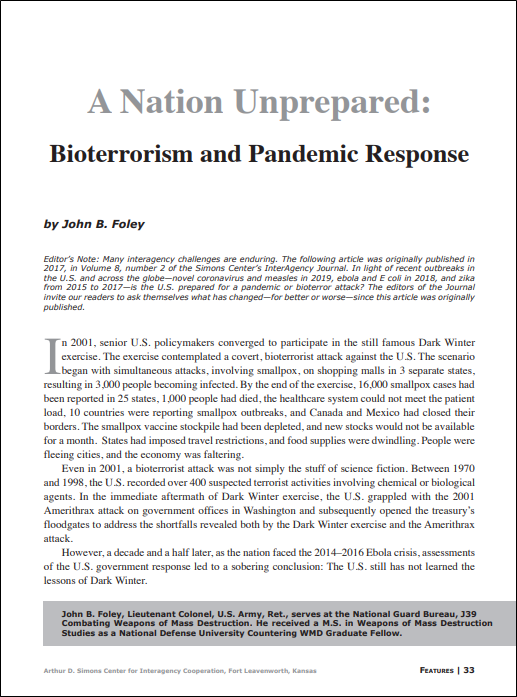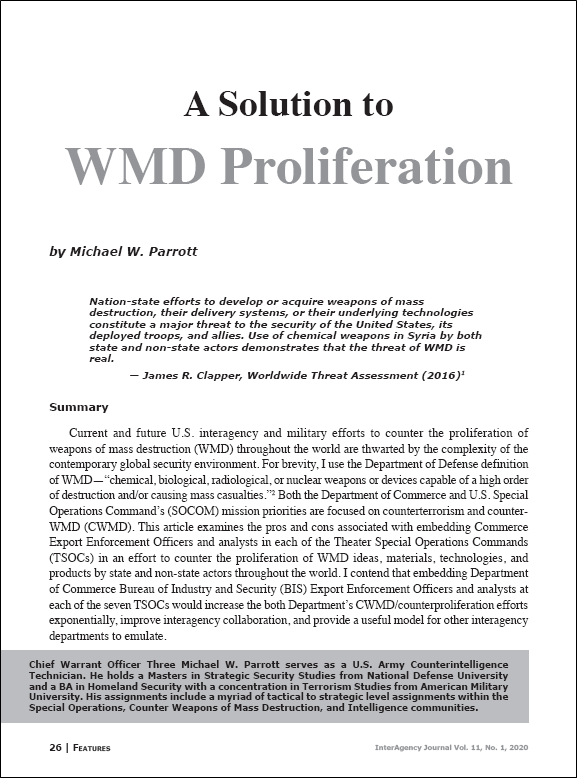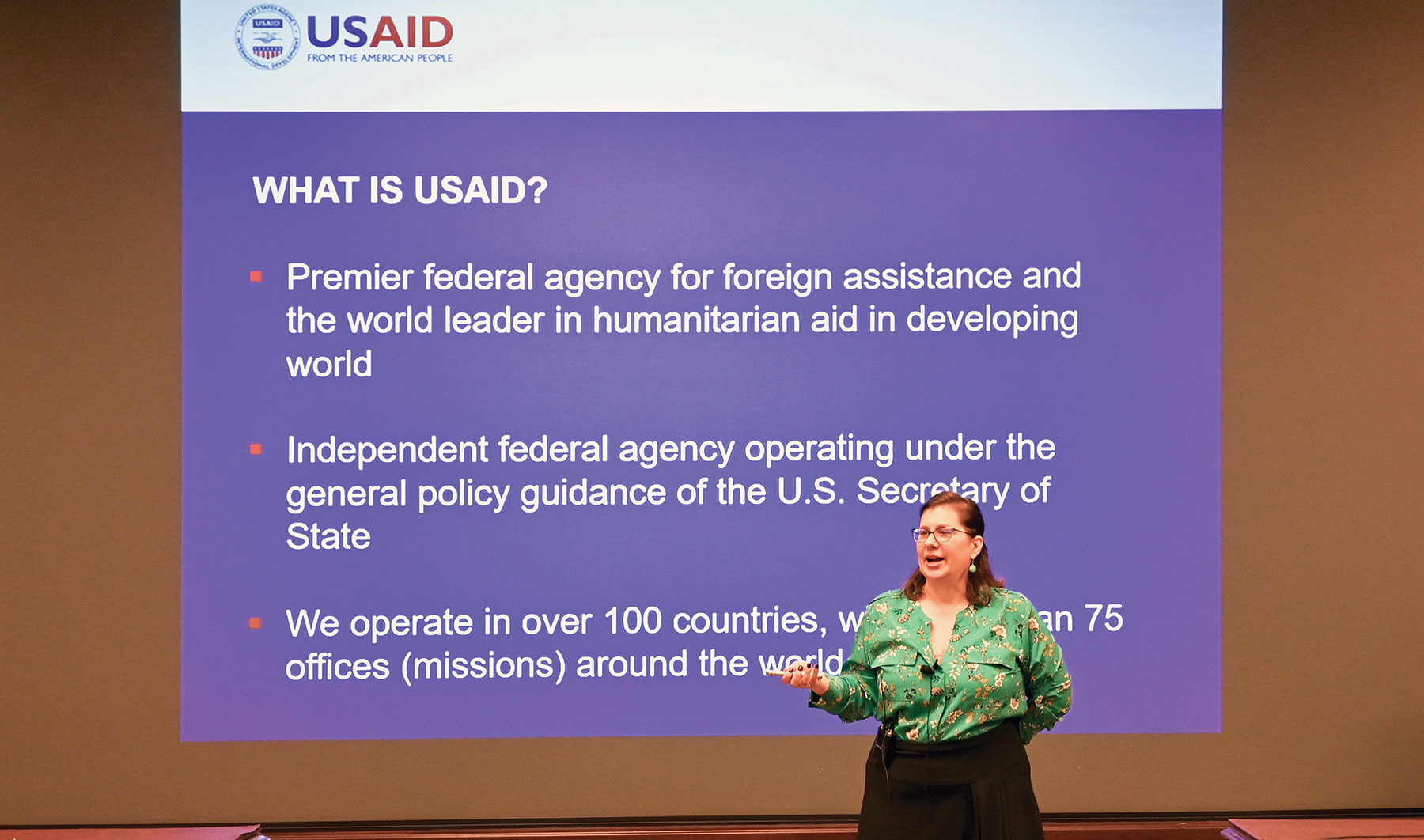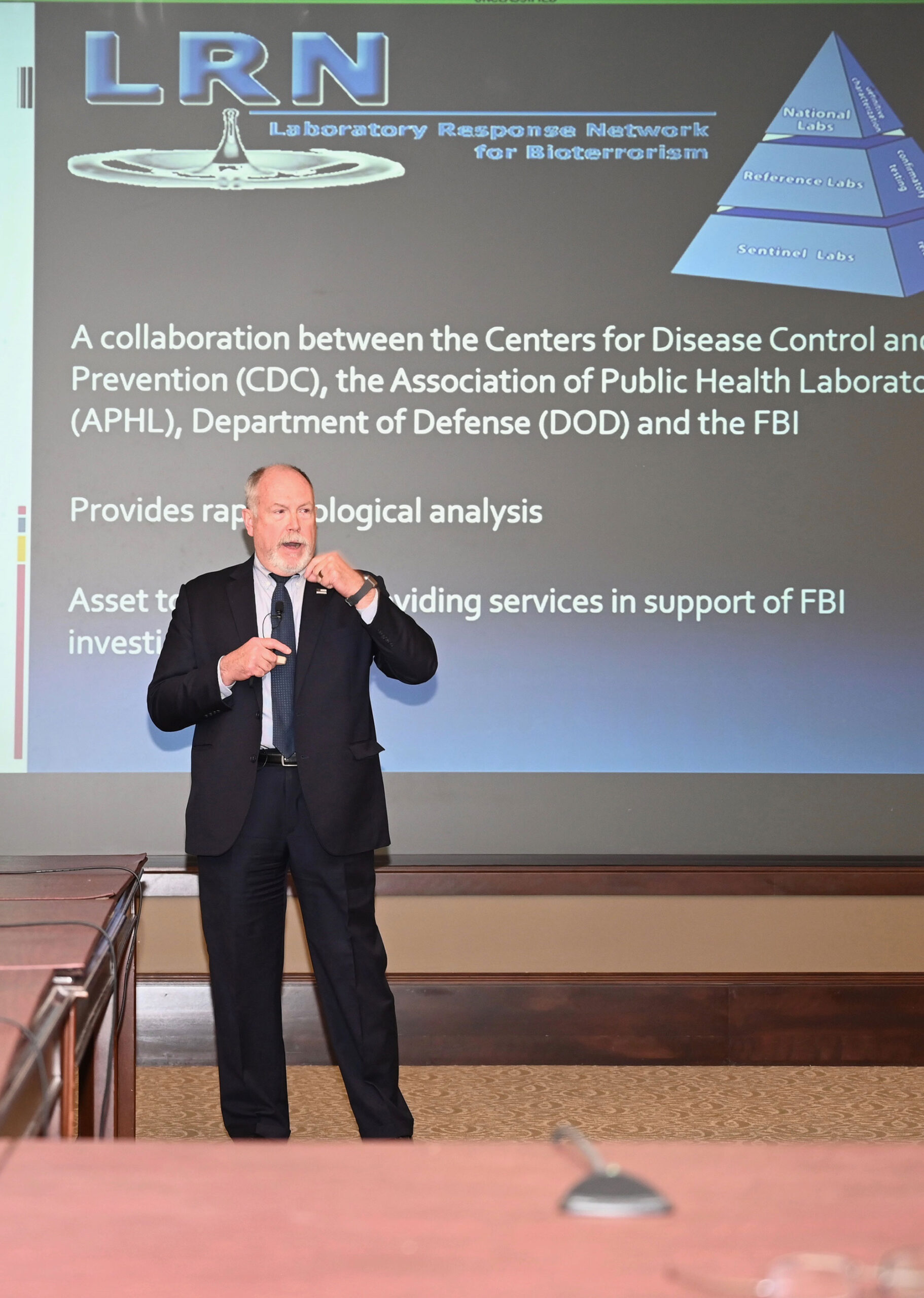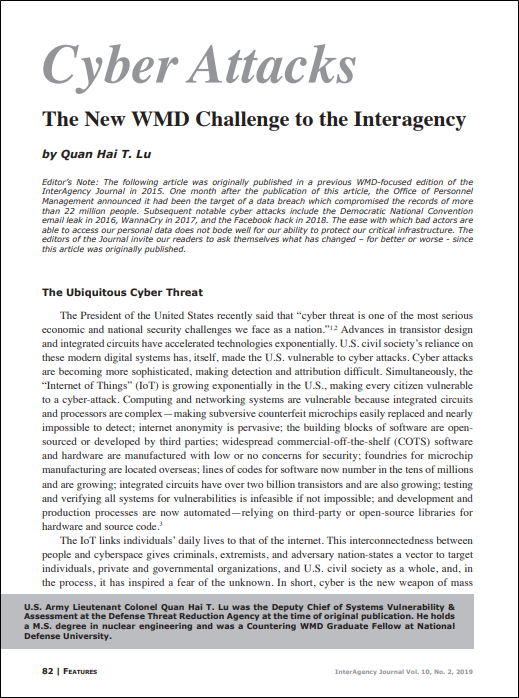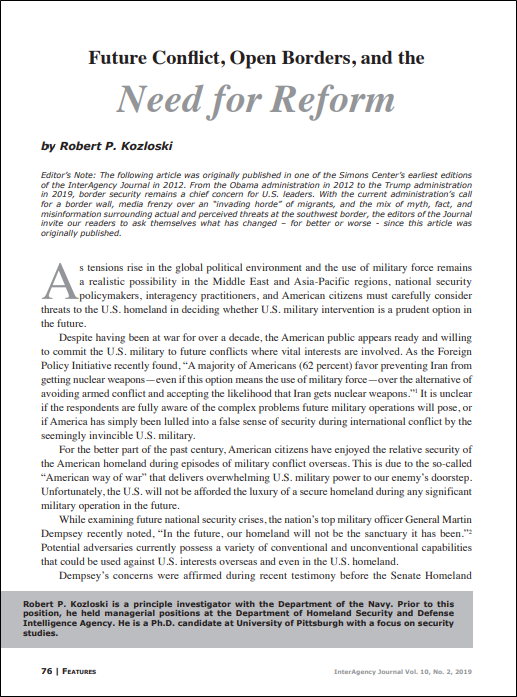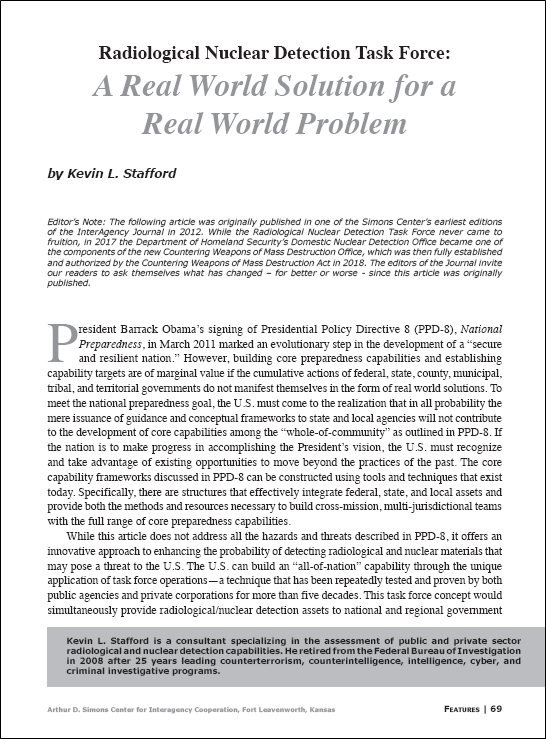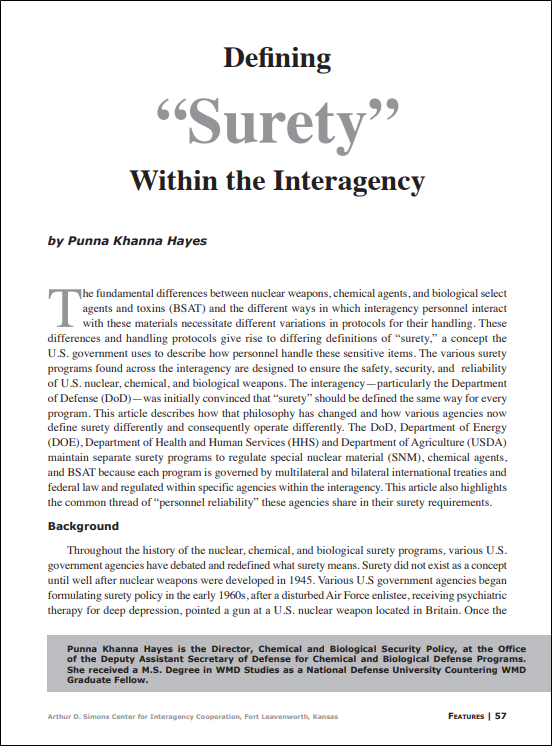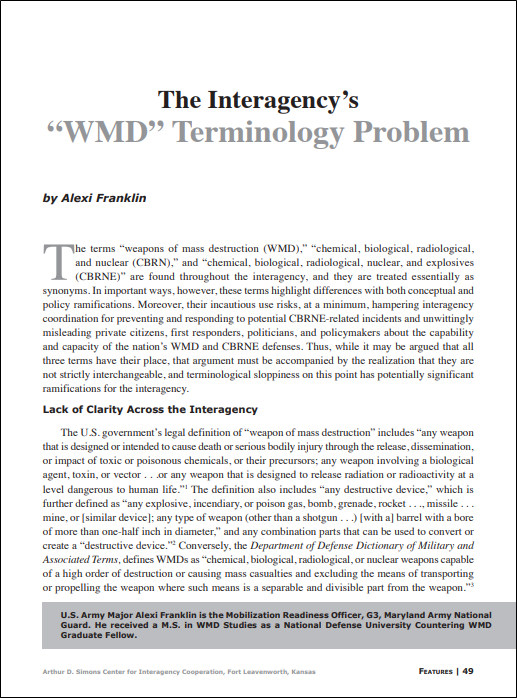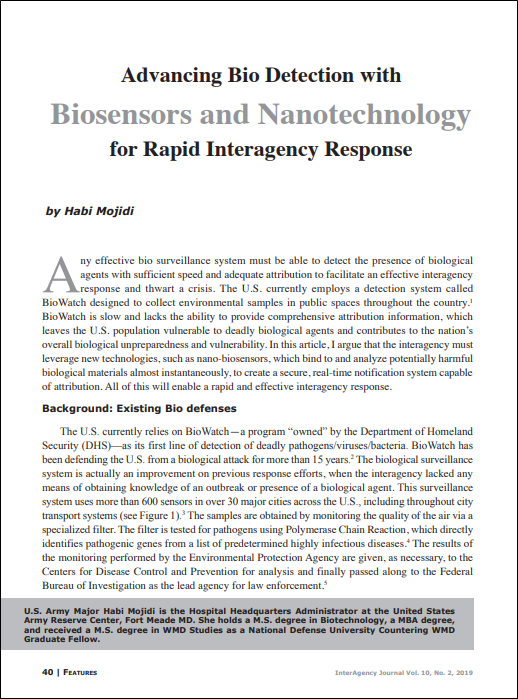Tag: weapons of mass destruction (WMD)
In 2001, senior U.S. policymakers converged to participate in the still famous Dark Winter exercise. The exercise contemplated a covert, bioterrorist attack against the U.S… However, a decade and a half later, as the nation faced the 2014–2016 Ebola crisis, assessments of the U.S. government response led to a sobering conclusion: The U.S. still has not learned the lessons of Dark Winter…
... Read MoreCurrent and future U.S. interagency and military efforts to counter the proliferation of weapons of mass destruction throughout the world are thwarted by the complexity of the contemporary global security environment… This article examines the pros and cons associated with embedding Commerce Export Enforcement Officers and analysts in each of the Theater Special Operations Commands in an effort to counter the proliferation of WMD…
... Read MoreThe eighth presentation of the InterAgency Brown-Bag Lecture Series for CGSC academic year 2020 was conducted March 12, in the Arnold Conference Room in the Lewis and Clark Center on Fort Leavenworth. Stephanie Chetraru, the U.S. Army Command and General Staff College Distinguished Chair for Development Studies, spoke on the U.S. Agency for International Development’s […]
... Read MoreThe seventh presentation of the InterAgency Brown-Bag Lecture Series took place on February 25, and featured two agents from the Federal Bureau of Investigation’s Kansas City Division – FBI Supervisory Special Agent Dana Kreeger and Intelligence Analyst Kenneth Hines. Kreeger and Hines apprised the audience on the Bureau’s roles, responsibilities, and capabilities regarding a weapons of mass […]
... Read MoreFeatured article: Cyber Attacks The New WMD Challenge to the Interagency by Quan Hai T. Lu The President of the United States recently said that “cyber threat is one of the most serious economic and national security challenges we face as a nation.” Advances in transistor design and integrated circuits have accelerated technologies exponentially. U.S. […]
... Read MoreFeatured article: Future Conflict, Open Borders, and the Need for Reform by Robert P. Kozloski As tensions rise in the global political environment and the use of military force remains a realistic possibility in the Middle East and Asia-Pacific regions, national security policymakers, interagency practitioners, and American citizens must carefully consider threats to the U.S. […]
... Read MoreFeatured article: Radiological Nuclear Detection Task Force: A Real World Solution for a Real World Problem by Kevin L. Stafford President Barrack Obama’s signing of Presidential Policy Directive 8 (PPD-8), National Preparedness, in March 2011 marked an evolutionary step in the development of a “secure and resilient nation.” However, building core preparedness capabilities and establishing capability […]
... Read MoreFeatured article: Defining “Surety” Within the Interagency by Punna Khanna Hayes The fundamental differences between nuclear weapons, chemical agents, and biological select agents and toxins (BSAT) and the different ways in which interagency personnel interact with these materials necessitate different variations in protocols for their handling. These differences and handling protocols give rise to differing […]
... Read MoreFeatured article: The Interagency’s “WMD” Terminology Problem by Alexi Franklin The terms “weapons of mass destruction (WMD),” “chemical, biological, radiological, and nuclear (CBRN),” and “chemical, biological, radiological, nuclear, and explosives (CBRNE)” are found throughout the interagency, and they are treated essentially as synonyms. In important ways, however, these terms highlight differences with both conceptual and […]
... Read MoreFeatured article: Advancing Bio Detection with Biosensors and Nanotechnology for Rapid Interagency Response by Habi Mojidi Any effective bio surveillance system must be able to detect the presence of biological agents with sufficient speed and adequate attribution to facilitate an effective interagency response and thwart a crisis. The U.S. currently employs a detection system called […]
... Read More"*" indicates required fields
